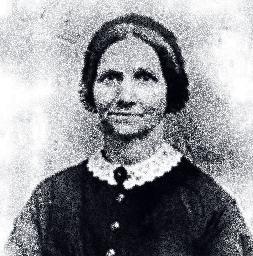
3 minute read
Celebrating Influential
Academy’s long history rich with influential women
In celebration of Women’s History Month last March and the 100th anniversary in 2020 of the ratification of the 19th Amendment that granted women the right to vote, Wilbraham & Monson Academy highlighted on social media some of its countless connections to women who have made an impact—near and far. The Academy salutes all women who have helped make WMA and the world a better place.
History of women attending the Academy
Wilbraham & Monson Academy was created in 1971 with the merger of two historically significant institutions of learning—Monson Academy and Wilbraham Academy (formerly Wesleyan Academy).
Both schools—Monson Academy (founded in 1804) and Wesleyan Academy (1817)—were founded as coeducational academies. Throughout its first century, Wesleyan had an enrollment of approximately one-third female students, an unusually high percentage for the times.
Many of the young women who attended Wesleyan contributed extraordinarily to the world as notable alumnae, while a young teacher at Monson Academy in the early 20th century became the first female cabinet member in the United States, an integral part of drafting the New Deal as Secretary of Labor under President Franklin Roosevelt.
Both Wilbraham Academy (1912) and Monson Academy (1926) closed briefly during the early 20th century due to financial constraints and reopened as male-only academies. In 1968, Monson started admitting girls as day students only. Wilbraham admitted girls as day students in 1970, just before the merger, after which WMA has been a coed institution for the last 50 years.
• A turn of the century photo on the steps of Rich Hall.
• Class of 2019 students pose together at Matriculation in August 2018.

• Staff members circa 2003: Front: Helen McEwen; Second row: Sue Craven, Marian DeMayo, Ann Marie LaMontagne, Carol DeLand. Back row: Mary Ellen Jamroz, Karen White, Barbara Moran, Dorothy Mason and Sandra Schoppe. • Old and new, but still “The Hill.”


mAry Ann ALLArd Booth One of the early 20th century’s leading female scientists and pioneer in the field of microscopic photography; Collier’s Weekly acclaimed her as one of the world’s seven most illustrious women scientists in 1917; an 1859 Wesleyan graduate. Lucy stonE Abolitionist, suffragist, acclaimed speaker and women’s rights activist; founded The American Woman Suffrage Association in 1869; attended

frAncEs PErkins Taught at Monson Academy in 1903 and 1904; Secretary of Labor through President Franklin Roosevelt’s four terms and first woman to hold a cabinet position; designed most of The New Deal social welfare and labor policies (Social Security, minimum wage and the Fair Labor Standards Act); featured on cover of Time Magazine in 1933. mABEL r. WELch An acclaimed late 19th century American painter, known for portrait miniatures and landscapes;

christinE LAdd-frAnkLin Class valedictorian was an innovator and feminist; developed a theory of color perception; first woman to complete all requirements for a Ph.D. from Johns Hopkins University; a Wesleyan Academy student from 1863

Wesleyan Academy 1839–41.

to 1865. attended Wesleyan Academy from 1884–1888.

chLoE cLArk WiLLson Active with Methodist missionary work; first and only teacher at the Oregon Institute (later renamed Willamette University); attended Wesleyan from 1837 to 1839.











